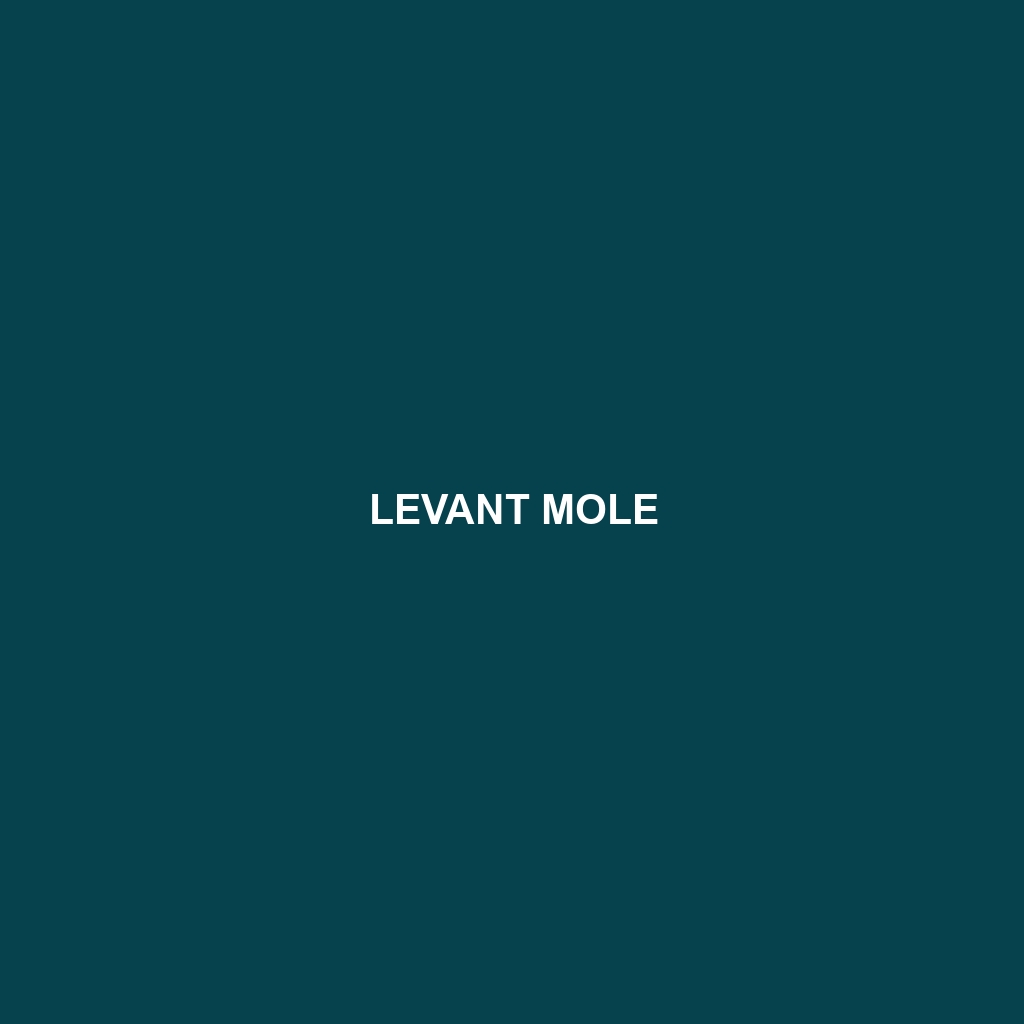Levant Mole Overview
Common Name: Levant Mole
Scientific Name: Talpa levantis
Habitat
The Levant Mole is primarily found in the eastern Mediterranean region, particularly in countries such as Turkey, Syria, Lebanon, and parts of Israel. This species thrives in various environments, including moist grasslands, forest edges, and cultivated areas. Levant Moles prefer soft, well-drained soils where they can easily burrow and search for food.
Physical Characteristics
Levant Moles are medium-sized mammals, typically measuring around 20 to 25 centimeters (about 8 to 10 inches) in length. They have a cylindrical body, short limbs, and a pointed snout, which aids in digging. The fur is dense and velvety, usually exhibiting a dark brown to grey coloration. One distinctive feature includes their powerful forelimbs, adapted for extensive tunneling, making them expert diggers in their subterranean habitats.
Behavior
Levant Moles are predominantly solitary creatures, known for their secretive and nocturnal behavior. They are primarily fossorial, spending the majority of their lives underground in complex burrow systems. These moles are known to be quite territorial, often marking their territory with scents. Their active foraging patterns and burrowing activities contribute significantly to soil aeration, which can enhance plant growth.
Diet
Levant Moles have a carnivorous diet primarily consisting of earthworms, insects, and other small invertebrates. They are quite proficient hunters, utilizing their sensitive whiskers and keen sense of hearing to locate prey underground. Their feeding habits play a crucial role in controlling insect populations and improving soil health in their ecosystems.
Reproduction
The breeding season for Levant Moles typically occurs in the spring. Females give birth to a litter of 2 to 5 young after a gestation period of about 4 to 5 weeks. Offspring are born blind and hairless, requiring extensive maternal care. As they grow, young moles begin to venture out of the burrow, learning to navigate their underground world and eventually establishing their own territories.
Conservation Status
Currently, the Levant Mole is classified as Least Concern by the IUCN, although habitat destruction and agricultural expansion pose potential threats to its population. Maintaining healthy ecosystems is crucial for the longevity of this species.
Interesting Facts
Despite their small size, Levant Moles can dig tunnels that extend several hundred meters in length. They have a unique ability to swim, which allows them to cross underground water bodies, diversifying their habitat range. Additionally, their burrowing activities profoundly affect soil composition and assist in seed dispersal.
Role in Ecosystem
The Levant Mole plays an essential role in its ecosystem by aerating the soil through its digging, which facilitates water absorption and promotes plant growth. By preying on invertebrates, they help maintain the balance of soil-dwelling populations, contributing to healthy biodiversity.
